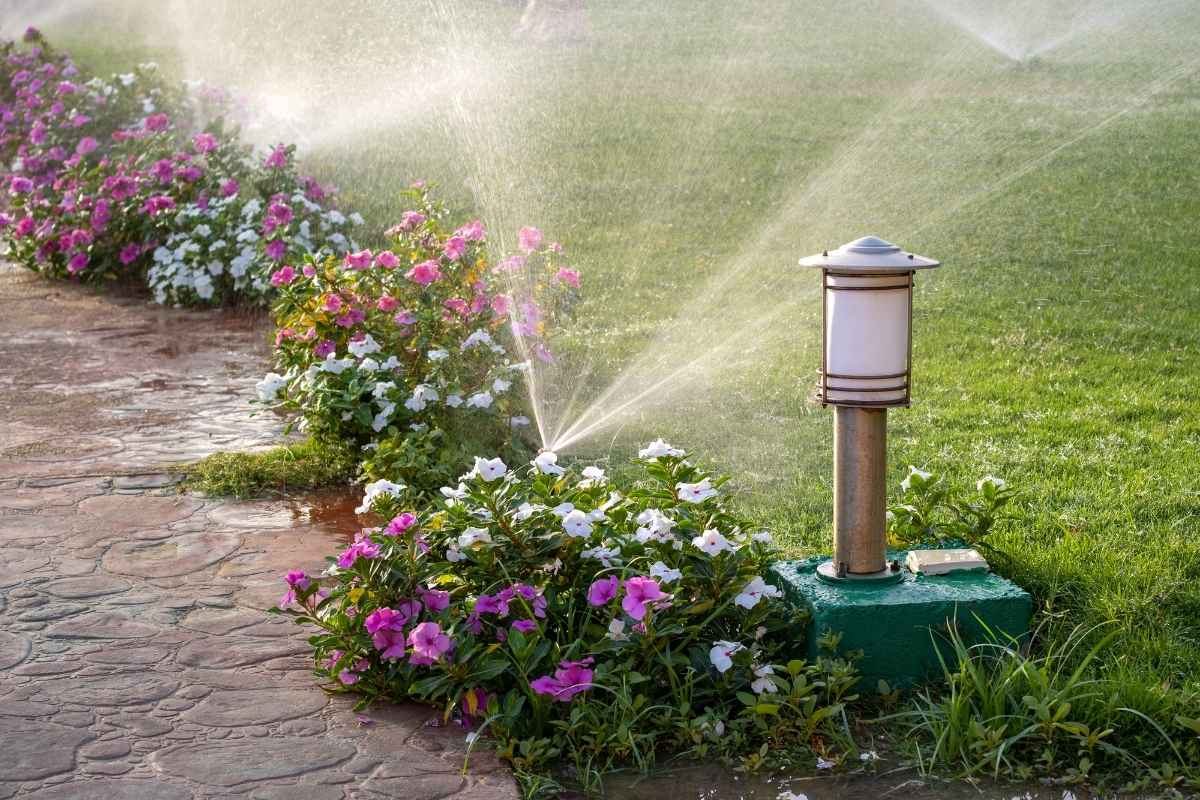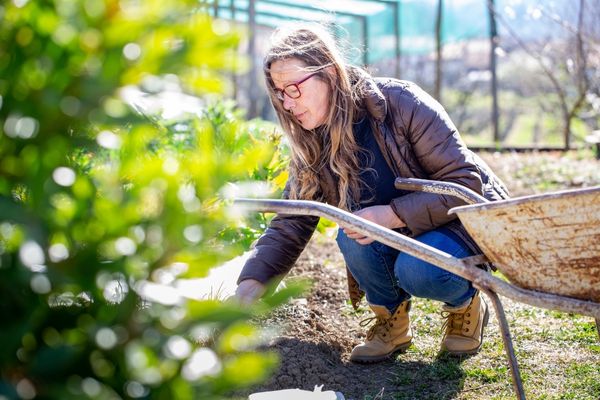
Landscape irrigation systems are essential for maintaining healthy gardens and lawns while conserving water. The four main types of irrigation include:
Each irrigation method offers specific benefits: surface irrigation is simple but labor-intensive, drip irrigation reduces water waste by 30-50%, sprinkler systems provide automated coverage for large areas, and blended systems optimize water usage by matching irrigation types to plant needs. Smart irrigation controllers can further improve efficiency by adjusting watering schedules based on weather conditions and soil moisture levels.
When choosing an irrigation system, consider your landscape size, plant types, soil conditions, local climate, and water conservation goals. Professional installation may be required for underground sprinkler systems, while drip irrigation can often be installed as a DIY project.

Maintaining a healthy landscape requires more than just planting and pruning, it demands an efficient irrigation system tailored to your environment. Boulder CM specializes in comprehensive landscape solutions that help property owners achieve optimal results. Understanding the various irrigation methods can help you choose the best solution for water conservation, plant health, and long-term sustainability. This article explores four main types of irrigation commonly used in landscapes, each offering unique benefits and applications. Whether you're designing a new garden or upgrading an existing system, knowing your options will help you make an informed decision.
Many people use surface irrigation for smaller yards or garden spaces. This method involves applying water directly to the soil surface. Water then soaks down to reach the roots of the plants. Tools like a watering can, hose, or sprinkler attachment are all part of this approach. It is a common method due to its simplicity and low equipment needs.
For better results, consider combining surface irrigation with professional lawn maintenance services to ensure consistent care throughout the growing season.
Drip irrigation works well for sloped areas, windy conditions, or scattered plant groupings. It delivers water through pipes and tubes placed near plant bases. This reduces water waste from wind and evaporation. Unlike wide lawn sprinklers, it targets only where water is needed. Drip systems can connect to irrigation controllers or smart controllers. These tools make watering easier and more efficient. They help save both water and energy over time. This setup is ideal for those wanting to manage landscape water use more precisely.
Key benefits of drip irrigation:
When installing drip irrigation, proper bed maintenance ensures your planting areas remain healthy and properly irrigated. The Colorado Contractors Association recommends working with certified professionals for complex irrigation installations.
Many people associate landscape irrigation with sprinkler systems. These systems use pipes and sprinkler heads to water plants. Water is sprayed into the air and falls over the plants. Sprinkler systems can be connected to automatic irrigation controllers. Some sprinkler heads stay above ground, while others pop up when watering. This method can waste water through evaporation and wind. Smart irrigation controllers help reduce waste by using weather data. They adjust watering times based on current conditions. This makes sprinkler systems more efficient and responsive.
Professional irrigation services can help design and install sprinkler systems that meet local building codes and regulations. Additionally, proper fertilization programs work hand-in-hand with efficient irrigation to promote healthy lawn growth.
Using a blended irrigation system helps reduce water waste across different parts of a landscape. This method combines drip irrigation and sprinkler systems to meet specific watering needs. Sprinklers work best for grass, while drip irrigation suits bushes, trees, and flowers. This targeted approach improves water efficiency and supports plant health. A smart irrigation controller is essential for blended systems. It sets watering times and durations for each zone. It also adjusts based on rain and weather forecasts to avoid overwatering. This setup keeps the landscape healthy while using less water overall. Consider speaking with an irrigation professional to explore system options.
The Association of General Contractors of Colorado emphasizes the importance of proper system design. Combining blended irrigation with comprehensive pest, weed, aeration, and fertilization services creates an integrated approach to landscape health.

Choosing the right landscape irrigation system is essential for maintaining a healthy and attractive outdoor space while conserving water and reducing maintenance time. The best system for your yard depends on your landscape's size, plant types, soil condition, and local climate. Here's how to make an informed decision.
Start by evaluating your landscape. Lawns, flower beds, shrubs, and vegetable gardens all have different water requirements. Grass typically needs more frequent watering, while shrubs and native plants may thrive with less. Also, observe how water drains on your property, sandy soil absorbs quickly, while clay retains moisture longer. Knowing these details will help you tailor your system for efficiency and plant health. Effective weed control also depends on proper irrigation practices, as overwatering can promote weed growth.
Understanding the main types of irrigation systems is essential for efficient landscape care. Each system is designed to deliver water in a specific way, helping to conserve resources while supporting plant health. The right system can reduce runoff, minimize evaporation, and target moisture where it's needed most. By learning how different systems work, you can match your landscape's unique needs with an irrigation method that supports long-term growth, saves water, and simplifies routine maintenance throughout the year. Many satisfied customers share their experiences in our testimonials section, highlighting the importance of proper irrigation selection.
Smart irrigation controllers can help manage your system based on weather, soil moisture, and plant types. These features reduce overwatering and adapt to seasonal changes, saving water and lowering utility bills. The Boulder Chamber of Commerce supports water conservation initiatives that benefit local businesses and residents alike.
Choose a system that's durable and easy to maintain. Underground sprinkler systems require professional installation and occasional repairs, while drip and soaker systems are more DIY-friendly but need regular inspection to prevent clogs. Before any installation, check Boulder County building permit requirements to ensure compliance. The Western Colorado Contractors Association provides additional resources for property owners considering irrigation upgrades.
Some areas have water-use restrictions or offer rebates for installing efficient irrigation systems. Always review local guidelines before choosing and installing your system. Boulder's business support services can provide information on available incentives. Additionally, ensure all work meets OSHA construction standards when hiring contractors.
Selecting the right irrigation system ensures your landscape stays green and vibrant with minimal waste. By considering your yard's specific needs and exploring available options, you can enjoy a healthy landscape while being environmentally responsible. Professional landscape and hardscape services can integrate irrigation systems seamlessly into your overall design.
Choosing the right landscape irrigation system is vital for promoting healthy plant growth while conserving water and reducing manual effort. Each method, surface, drip, sprinkler, and blended system, offers unique advantages depending on your yard's size, soil type, and plant variety. Surface irrigation is affordable but time-consuming, while drip systems provide efficient, targeted watering. Sprinklers offer convenience and wide coverage, and blended systems balance water distribution by matching irrigation to specific zones. Smart controllers can further boost efficiency by adjusting schedules based on real-time weather and soil conditions. Whether you opt for a simple DIY solution or a professionally installed system, the key is to align your irrigation method with your landscape's specific requirements. Taking time to understand each option helps ensure your yard remains lush and sustainable all year round, without wasting water or overburdening your schedule. For comprehensive year-round property care, including snow and ice mitigation services, contact us to discuss your landscape needs. Remember to verify all installations meet OSHA regulations and obtain necessary building permits and inspections before beginning any major irrigation project.
What is the most water-efficient irrigation system?
Drip irrigation is the most water-efficient, reducing water waste by up to 50% by delivering water directly to plant roots.
Can I install a landscape irrigation system myself?
Yes. Surface and drip systems are often DIY-friendly. However, sprinkler and blended systems usually require professional installation.
How do smart irrigation controllers work?
Smart controllers use weather data and soil moisture levels to adjust watering schedules automatically, improving efficiency and preventing overwatering.
Which system is best for a large lawn?
Sprinkler irrigation works best for large lawns, as it provides wide coverage and can be automated for convenience.
Are there rebates for installing irrigation systems?
Some areas offer rebates for installing water-efficient systems. Check local regulations and programs for availability.